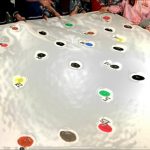ACTIVE LISTENING FOR TEACHERS
Active listening is a very common topic in the education sector. But what does it mean exactly? How does it apply in real life? What does it mean to listen actively your student? What are the results that you should obtain? How can you recognize them?
We can define active listening as an assertive communication practice, based on understanding and empathy; useful, not only to promote the ability to express your emotions and ideas in a correct and efficient way, but also to learn to listen and identify the meanings and feelings of others, establishing a real connection that can become the base of a successful relationship. Listening in an active way means relating to the other, getting the sense of his/her message, the posture, the intonation, the emotion that give context to what is being said.
This act of listening: promotes valuable discussions in class; stimulates students to learn new things; helps children and youth to become independent and act for personal motivations; guarantees teaching in a safe environment in which you feel free and understood. This means that it creates a high level of trust between teacher and student, but also from student to student.
We should remember that, as teachers, we should be an example and often become, whether we are aware or not, a superhero to our students. It is clear that our class learn more from copying the other than from what we teach them through our lessons. Therefore, as we turn into educators able to use active listening, our group will also develop the capacity to listen in a more focused and efficient way.
The most common mistakes that we make when listening are:
- Giving an answer without truly listening to the question.
- Giving an answer before the student has finished explaining his/her thoughts, because we think we know what he/she is about to say.
- Listening only to part of the speech, thinking that the rest is not relevant.
- Paying more attention to whoever is speaking that what is being said. So, since you know your students, you categorize them.
- Answering giving a diagnosis.
- Giving too obvious answers, impeding your student from reaching a solution by himself.
Try using active listening with your class this week and let us know how it goes in our Facebook page.
Thank you for reading!


